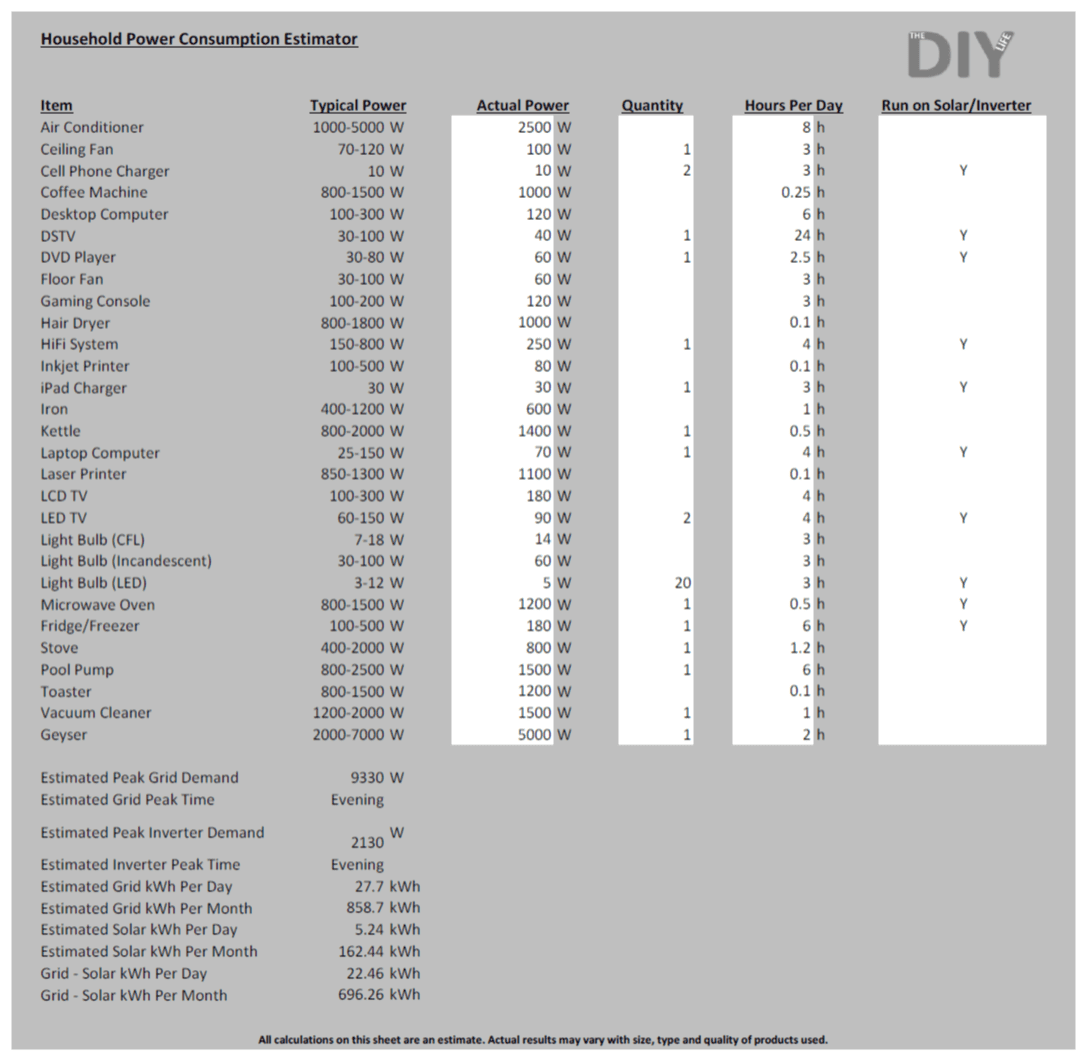This spreadsheet enables you to estimate your household power consumption to assist you in designing a solar power system and more specifically selecting an inverter for your solar or backup power system.
How To Use This Spreadsheet
The spreadsheet is broken up into four input columns in order to estimate your household power consumption.
Inputs
- The actual power of each appliance is filled in the actual power column. This can be an estimate based on the ranges given in the typical power column or the actual power rating specified on the label of the appliance you are using if available. You need only fill in the rows which you are using.
- The quantity of appliances for each row should be filled into the next column. This allows you to cater for multiple televisions, light bulbs, cellphone chargers etc.
- The hours per day column is provided to limit the number of hours the appliance will be running in a typical day. For example a cellphone only takes a few hours to charge and your lights are generally only used at night.
- The last column to to toggle which appliances you wish to run on your solar power system’s inverter. A Y in this column includes it in the solar power kilowatt hour and inverter calculation.
Outputs
- The estimated peak demand calculations take into account the power rating, quantity, hours per day and the period in the day where these appliances are typically used to provide an estimate on your household peak demand. An indication is also given as to which period in the day this occurs.
- The kilowatt hours of electricity used are then calculated for your household, the solar power system and then finally with the household being supplemented by the solar power system. This gives you an indication on how many kilowatt hours (and in turn how much money) can be saved by switching the selected appliances to solar power.


